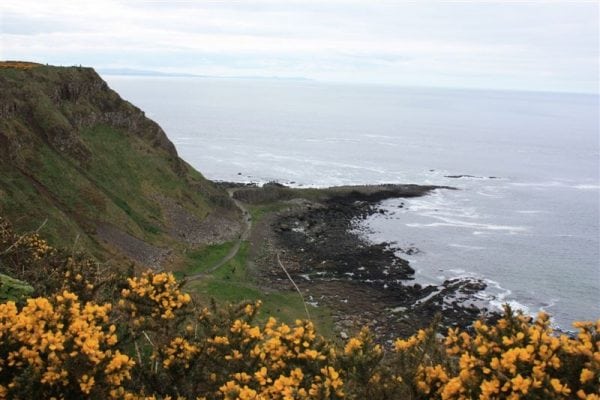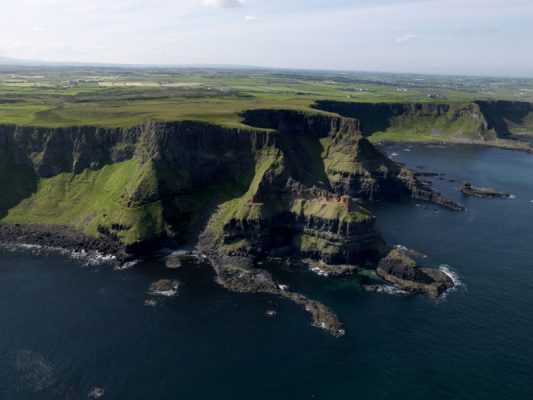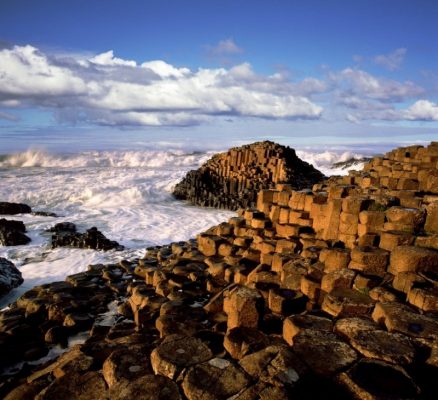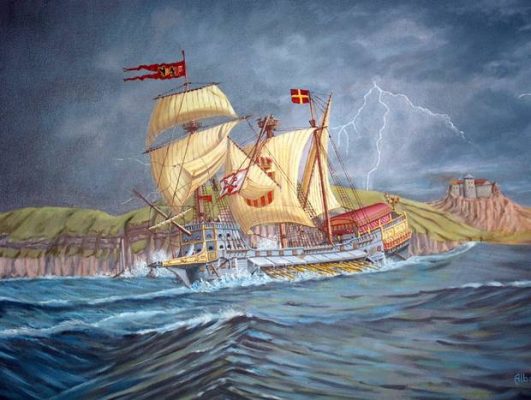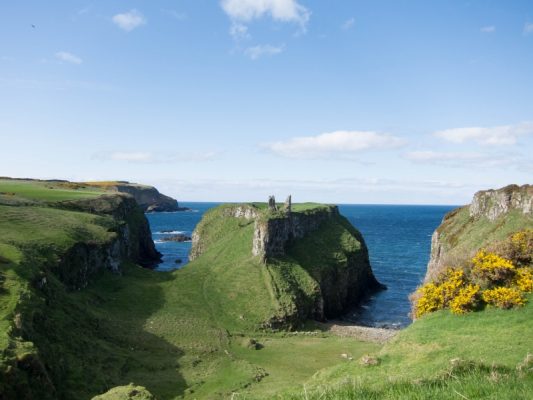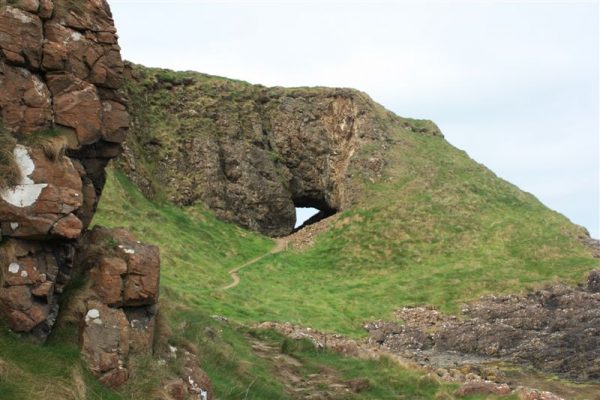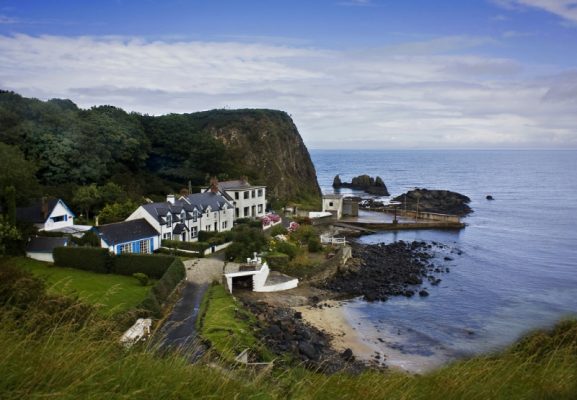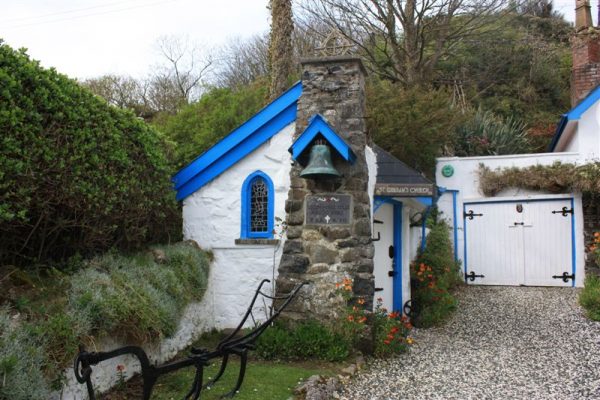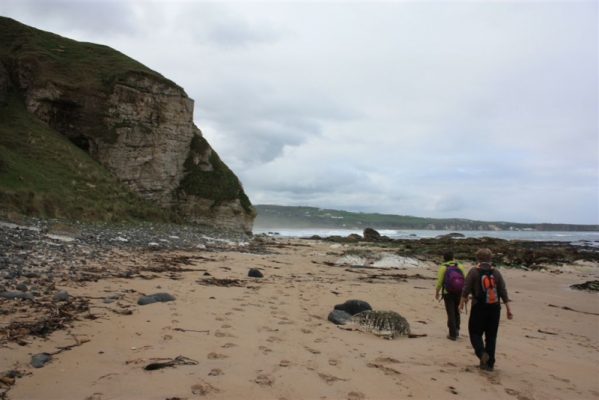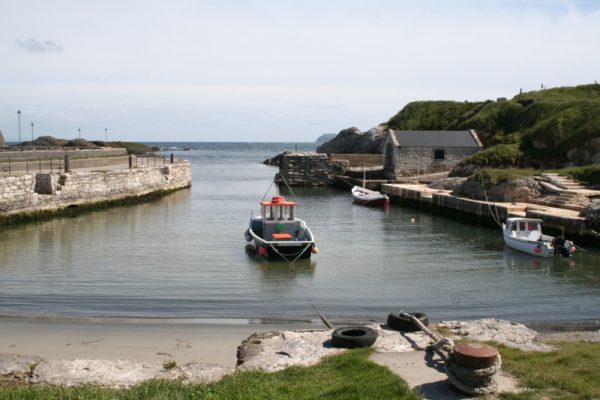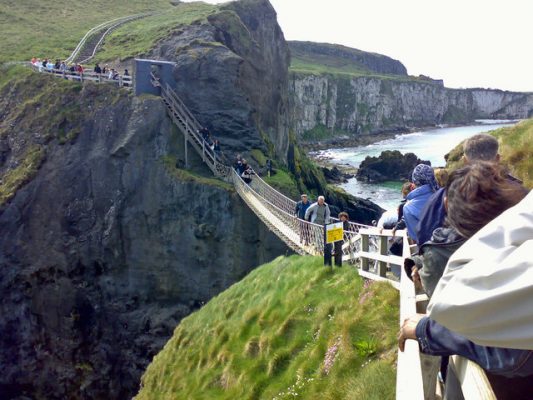- Created: August 28, 2012 10:33 am
- Updated: January 26, 2022 3:02 pm
- Distance Instructions
- Distance 24 km
- Time 0 s
- Speed 0.0 km/h
- Min altitude 1 m
- Peak 97 m
- Climb 488 m
- Descent 497 m
The Causeway Coast Walking Route is 16km long (4hr) and is one of Ireland's most scenic and varied coastal walks from the Carrick a Rede Rope Bridge to the Giants Causeway. It is both spectacular and unmissable in equal measures and by completing it you take in two of Northern Ireland's premier tourist attractions, the Giants Causeway and the Carrick a Rede Rope Bridge. This moderate 16km walk takes in a variety of scenic spots and points of interest and includes walking on various terrain including beaches, across rocks and along cliff top paths. This walk forms the most scenic section of the official Causeway Coast Way Walking Route which is 53 km in length and stretches from Portstewart to Ballycastle and it also follows the general route of the Causeway Coastal Scenic Drive from Belfast to Derry. The spectacular walk hugs the very edge of the shore all the way to the Giants Causeway and brings you face to face with the North Atlantic.
The walking route itself is signposted but the guide below will help where needed. Before you start this walk, do not miss visiting the Carrick a Rede Rope Bridge itself which is only 1m wide and spans between the mainland cliff and Carrick a Rede island.
From the Carrick a Rede car park, travel west and descend down into the overflow car park and onto the grassy cliff path at the far end (OS map ref D047450). Follow this path for approx. 1km and turn right onto road at a small church (D039449). This road will lead to the charming Ballintoy Harbour where Games of Thrones scenes have been filmed such as where Theon Greyjoy arrives back in the Iron Islands, where he later admires his ship, the Sea Bitch and also where he first meets his sister Yara.
From here, follow the shoreline west passing low dunes and cross a stile leading past rock stacks to access the narrow end of White Park Bay Beach (D028448). The beach offers easy walking along its length and ends in an area of boulders (D008440). Care is needed when crossing the uneven rocks and chalk boulders to access Portbradden.
It is extremely important to not that this route may also be blocked during high tide so you need to target crossing the White Park Bay within 3 hours either side of low tide. Click here to check Tide times . During high tide, Portbradden can be accessed by joining the main coast road via the track at the youth hostel, and taking the winding road down to Portbradden. This alternative to the very lovely beach walk is a less pleasant climb up and decent down from the road which parallels the beach. 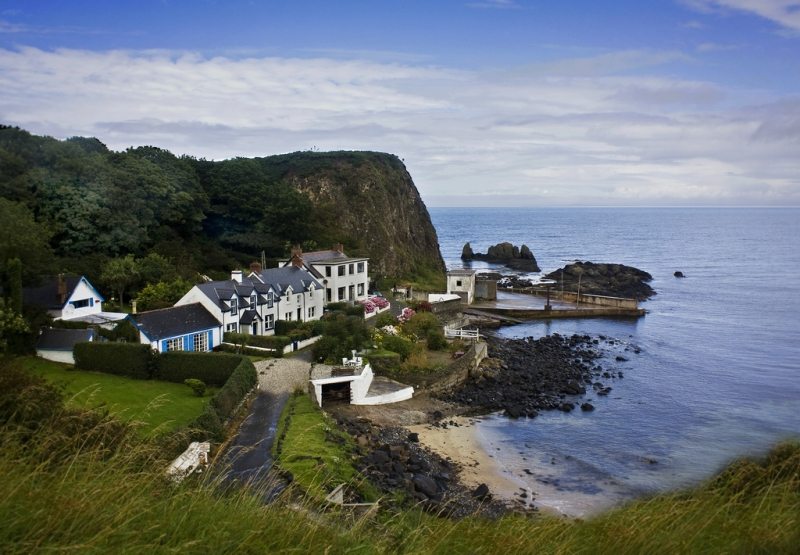
At the end of White Park Bay strand there is also a lovely little church called St. Gobhans Church (D005442) which is worth a visit and is the smallest church in Ireland.

Continue along the coast, passing through a wonderful limestone arch at D006445.

Continue along the path passing a series of rocky bays to Dunseverick Harbour. From here follow the park along the foreshore until you reach a car park near the remains of the 16th century Dunseverick Castle (D987445) which is approx 1.5hours from White Park Bay.
Continue to follow the path climbing steadily in a westerly direction passing by Portmoon Salmon Fishery, Contham Head and Benbane and Bengore Head (D966459). Between Benbane and Bengore is Hamiltons Seat (D969456), the highest point on the walk which offers superb views and is approx. 45mins from Dunseverick Castle.
Continue along the path passing the Bays of Port na Tober and Port na Spaniagh which is the site (D453457 at sea) where the 50-gun galley, the Girona, the last known wreck of the Spanish Armada, sank in 1588.
Continue a little further and you pass the Ampitheatre (D953451) and then onto the ‘Shepherd’s steps’ which leads down to the waters edge to experience the hexagonal basalt formations that make the Giant's Causeway, Ireland's first World Heritage Site.
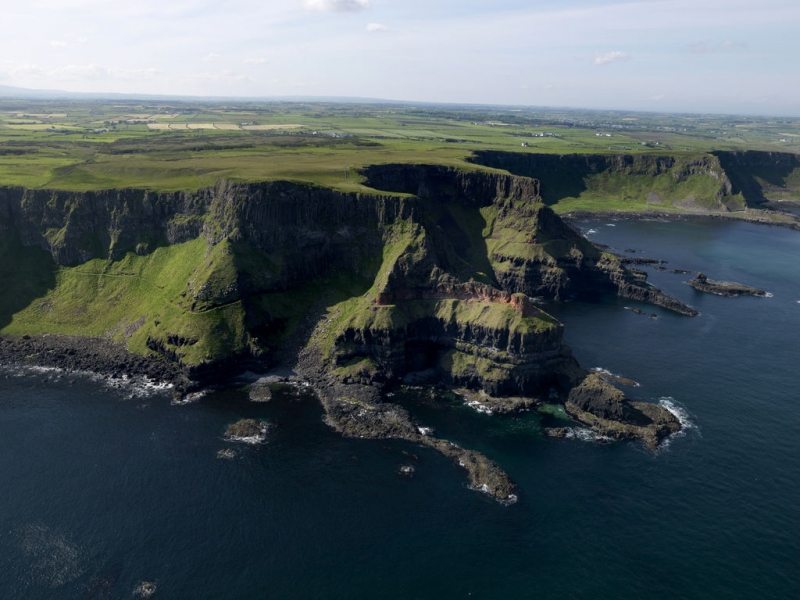 Here you can visit world renowned basalt formations such as the Organ, the Giants eye and onto a viewpoint near Port Reostan. These formation formed over 60million years ago
Here you can visit world renowned basalt formations such as the Organ, the Giants eye and onto a viewpoint near Port Reostan. These formation formed over 60million years ago
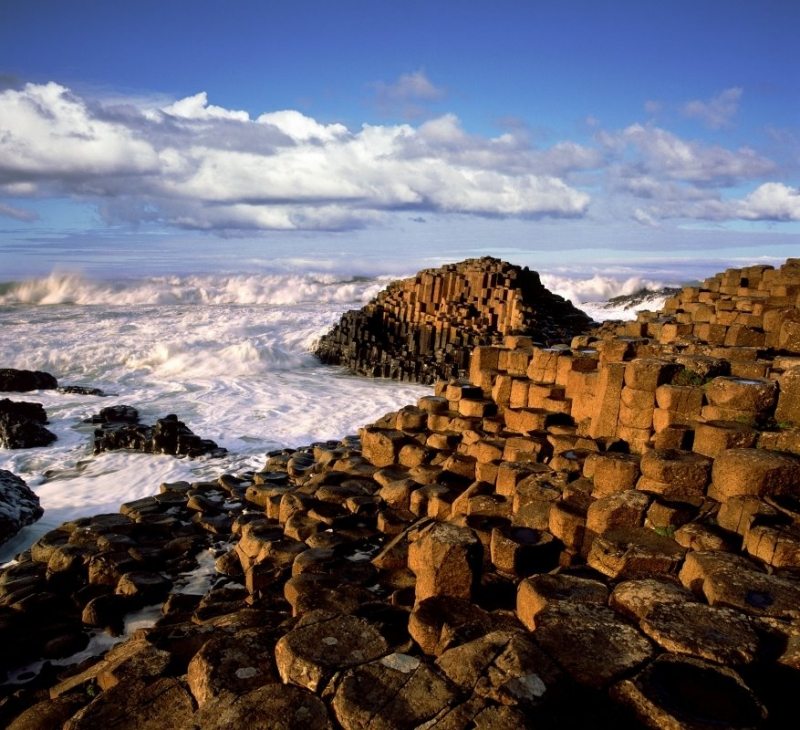
Irish mythology has it that the hexagonal basalt columns were built by the Irish Giant Fionn MacChumhaill to form a bridge to Scotland
From here follow the tarmac path to the visitors centre or follow the cliff top path to the visitors centre where if you are in time you can get some drinks, food and refreshments. Once here it may be possible to get a bus back to the Carrick a Rede Car Park.
Use our Map of Ireland and Sat Nav tool to get directions and our detailed route map and GPS on our ActiveME App to find and follow the path live on screen and keep on track. At all times, our maps and App should be used in conjunction with a proper map and compass navigation techniques.
Gallery
The Causeway Coast Walking Route is 16km long (4hr) and is one of Ireland’s most scenic and varied coastal walks from the Carrick a Rede Rope Bridge to the Giants Causeway. It is both spectacular and unmissable in equal measures and by completing it you take in two of Northern Ireland’s premier tourist attractions, the Giants Causeway and the Carrick a Rede Rope Bridge. This moderate 16km walk takes in a variety of scenic spots and points of interest and includes walking on various terrain including beaches, across rocks and along cliff top paths. This walk forms the most scenic section of the official Causeway Coast Way Walking Route which is 53 km in length and stretches from Portstewart to Ballycastle and it also follows the general route of the Causeway Coastal Scenic Drive from Belfast to Derry. The spectacular walk hugs the very edge of the shore all the way to the Giants Causeway and brings you face to face with the North Atlantic.

The walking route itself is signposted but the guide below will help where needed. Before you start this walk, do not miss visiting the Carrick a Rede Rope Bridge itself which is only 1m wide and spans between the mainland cliff and Carrick a Rede island.
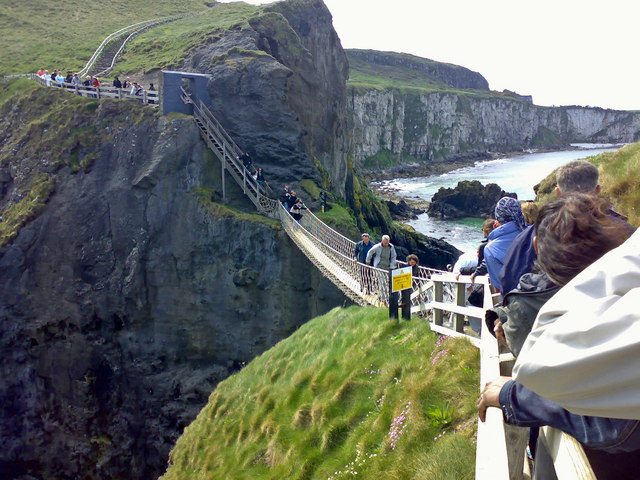
From the Carrick a Rede car park, travel west and descend down into the overflow car park and onto the grassy cliff path at the far end (OS map ref D047450). Follow this path for approx. 1km and turn right onto road at a small church (D039449). This road will lead to the charming Ballintoy Harbour where Games of Thrones scenes have been filmed such as where Theon Greyjoy arrives back in the Iron Islands, where he later admires his ship, the Sea Bitch and also where he first meets his sister Yara.
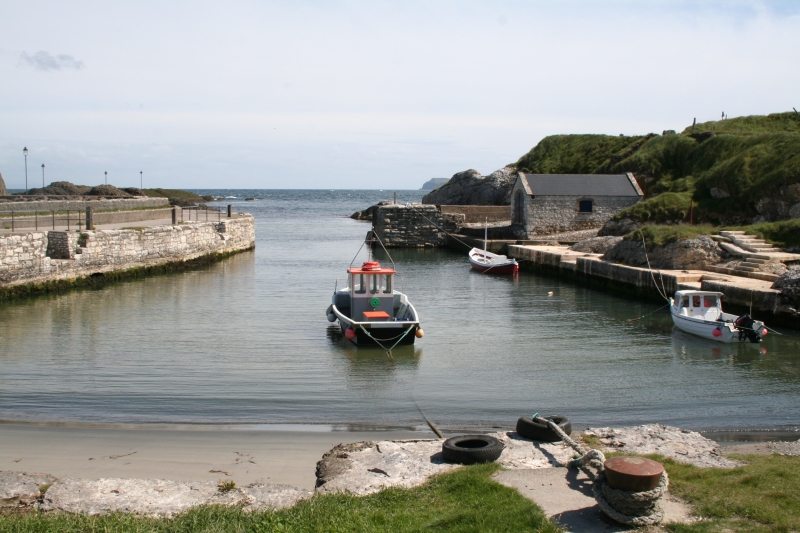
From here, follow the shoreline west passing low dunes and cross a stile leading past rock stacks to access the narrow end of White Park Bay Beach (D028448). The beach offers easy walking along its length and ends in an area of boulders (D008440). Care is needed when crossing the uneven rocks and chalk boulders to access Portbradden.

It is extremely important to not that this route may also be blocked during high tide so you need to target crossing the White Park Bay within 3 hours either side of low tide. Click here to check Tide times . During high tide, Portbradden can be accessed by joining the main coast road via the track at the youth hostel, and taking the winding road down to Portbradden. This alternative to the very lovely beach walk is a less pleasant climb up and decent down from the road which parallels the beach. 
At the end of White Park Bay strand there is also a lovely little church called St. Gobhans Church (D005442) which is worth a visit and is the smallest church in Ireland.

Continue along the coast, passing through a wonderful limestone arch at D006445.

Continue along the path passing a series of rocky bays to Dunseverick Harbour. From here follow the park along the foreshore until you reach a car park near the remains of the 16th century Dunseverick Castle (D987445) which is approx 1.5hours from White Park Bay.
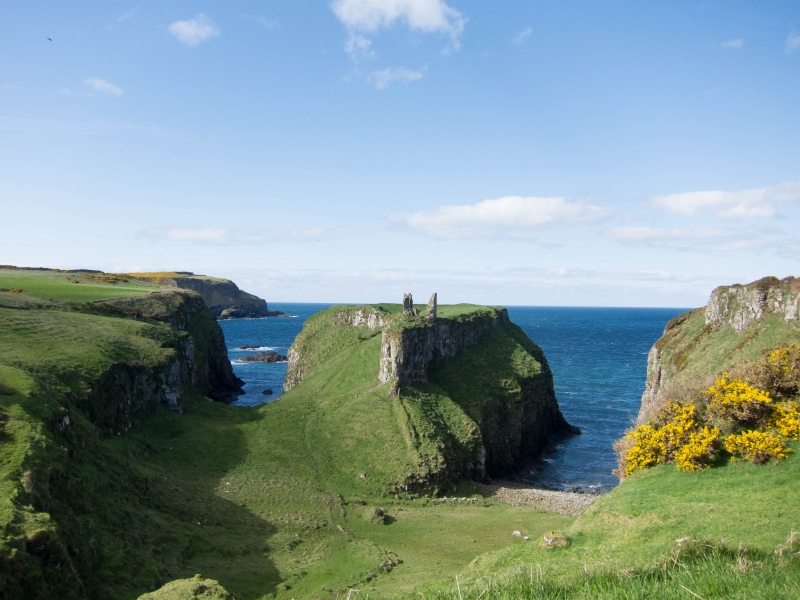
Continue to follow the path climbing steadily in a westerly direction passing by Portmoon Salmon Fishery, Contham Head and Benbane and Bengore Head (D966459). Between Benbane and Bengore is Hamiltons Seat (D969456), the highest point on the walk which offers superb views and is approx. 45mins from Dunseverick Castle.
Continue along the path passing the Bays of Port na Tober and Port na Spaniagh which is the site (D453457 at sea) where the 50-gun galley, the Girona, the last known wreck of the Spanish Armada, sank in 1588.
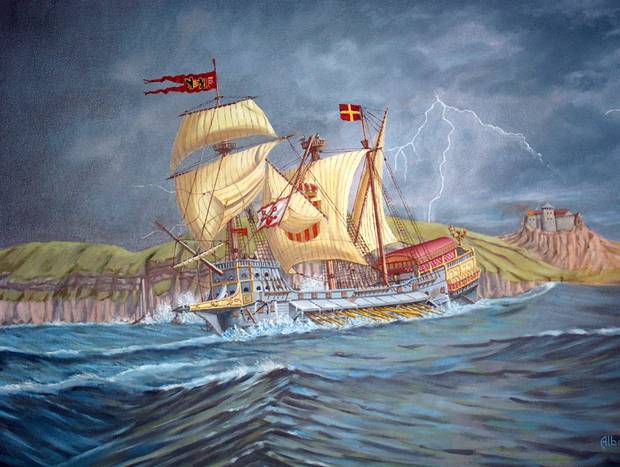
Continue a little further and you pass the Ampitheatre (D953451) and then onto the ‘Shepherd’s steps’ which leads down to the waters edge to experience the hexagonal basalt formations that make the Giant’s Causeway, Ireland’s first World Heritage Site.
 Here you can visit world renowned basalt formations such as the Organ, the Giants eye and onto a viewpoint near Port Reostan. These formation formed over 60million years ago
Here you can visit world renowned basalt formations such as the Organ, the Giants eye and onto a viewpoint near Port Reostan. These formation formed over 60million years ago

Irish mythology has it that the hexagonal basalt columns were built by the Irish Giant Fionn MacChumhaill to form a bridge to Scotland
From here follow the tarmac path to the visitors centre or follow the cliff top path to the visitors centre where if you are in time you can get some drinks, food and refreshments. Once here it may be possible to get a bus back to the Carrick a Rede Car Park.
Use our Map of Ireland and Sat Nav tool to get directions and our detailed route map and GPS on our ActiveME App to find and follow the path live on screen and keep on track. At all times, our maps and App should be used in conjunction with a proper map and compass navigation techniques.

